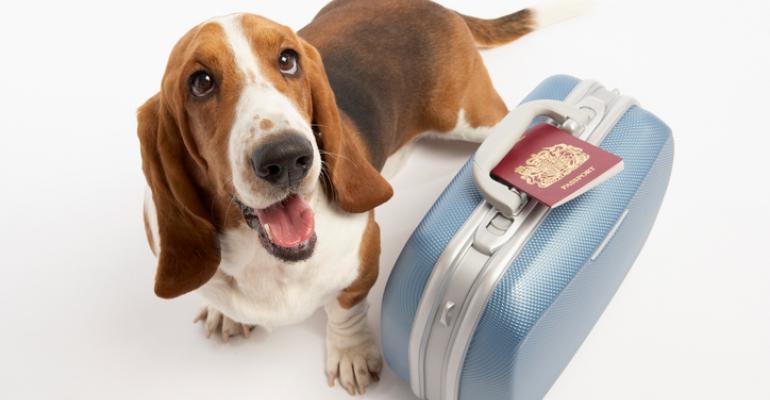Picture it: Spring 2008. Barcelona. A large pink suitcase, a medium pink suitcase, a black leather laptop tote, and a purse. An escalator. What could possibly go wrong?
When I was at the busiest point of my meeting management career, I traveled between 25 percent and 30 percent of the year to both domestic and international destinations. Despite many years of travel experience, I was a terrible packer. I traveled with far more luggage than necessary and used about half of what I packed, and ended up with unnecessary baggage fees and a sore shoulder or two.
Back to Barcelona. Business trips were the most challenging, since you need clothes for business meetings and evening engagements, and matching shoes. The taxi had dropped me off at the wrong terminal, and I found myself walking endlessly, trying to get to the correct one. That’s when I found myself with all of this luggage on an escalator, trying to get down to the next terminal. To my horror, the wheel of my large suitcase got stuck in the mechanism and halted the escalator, setting off a loud beep. A line of grumpy travelers behind me hefted up their own luggage and started walking down, some casting me looks along the way as they squeezed past me and my luggage.
After that experience, I realized that I needed to change the way I packed. And I’d like to share what I learned with you.
First, make a list.
The easiest way to pare down what you’re putting in your luggage is to work from a list. (This helps you save money at the grocery store, too.) But don’t wait until just before you pack to make this list. The best way to ensure that you don’t forget anything is to build the list a few weeks before, and then review it once or twice before you pack to ensure you didn’t forget anything. Chances are that you will add and subtract things in that time, since moving through your routine will help you notice where there might be items you’ve forgotten or could live without.
Then gather your items in one place.
Since I was traveling at least one week a month, I really needed a separate set of toiletries and travel-related gear. Since much of this was on my list, I was able to build up a bit of an inventory while I was out and about—whenever I went to the pharmacy, I’d stock up on travel-sized soaps, lotions, and toothpaste. Because I loved my hair stylist’s hair-care line, I purchased some travel-sized products when I was there for my regular appointment. Even if you’re not traveling for a week or more, start to put aside your clothing in one place as you do your laundry, assuming you won’t wear it in the meantime.
Pack, and then unpack.
Oftentimes, I’ll pack items together per day, so that I have an idea of what to wear and unpacking and dressing on the road will be easier. This process also helps me eliminate the “just in case” items, since those typically go unused and add needless weight. Then, I unpack: When I’m done, I challenge myself to remove at least three items from the pile as well.
Downsize your actual luggage.
While I had always sought out the largest possible suitcase in the past, I have now downsized and my largest piece of luggage is technically medium. This forces me to minimize what I pack, while knowing that I can easily fit enough for a week in that one case.
In summary: Make a list of what you need, review it, build your travel-sized item inventory along the way, and then edit your packing in real time. Building this into your routine when you’re not traveling will help you enjoy the process in anticipation of a fun trip, and will help you be efficient.
Do you have any packing tips that I missed? Share them!






